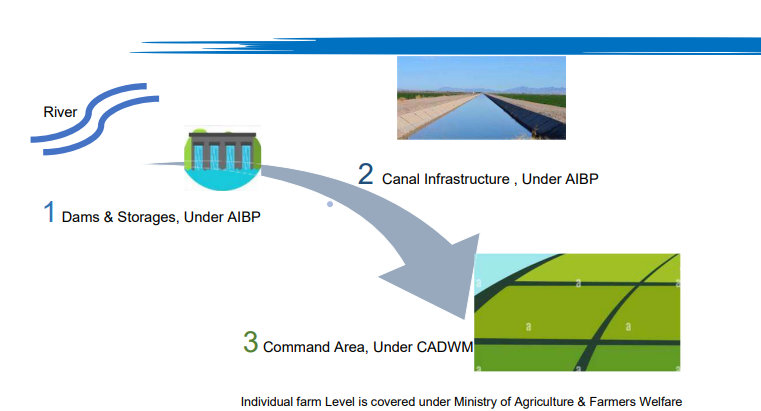About Us
About the MCAD
The Command Area Development and Water Management (CADWM) initiative was originally launched to address the Inefficiencies in water delivery from irrigation canals to agricultural fields, aiming to ensure that irrigation potential created through major and medium projects actually translated into productive use at the farm level. Over the decades, the program evolved through various Five-Year Plans and was eventually restructured under the Pradhan Mantri Krishi Sinchayee Yojana (PMKSY) in 2016. Despite its widespread reach and the fact that over 97% of beneficiary households reported positive impacts, traditional canal-based systems continued to face challenges such as poor maintenance, inefficient water use, and excessive reliance on groundwater. These limitations underscored the need for a more modern, integrated approach to irrigation management

The Modernisation of CADWM (MCAD) represents a strategic shift toward sustainable and efficient water use in agriculture. It introduces pressurized piped irrigation systems, volumetric water measurement, and cluster-based governance models that replace outdated infrastructure and practices. The program reimagines irrigation not just as a utility but as a service-one that is accountable, responsive, and tailored to the needs of farmers. MCAD aligns with national priorities such as doubling farmers' income, enhancing climate resilience, and promoting water conservation. It integrates multiple water sources and leverages digital tools to create a dynamic imgation ecosystem that supports precision agriculture and participatory management.
To operationalize this vision, MCAD sets forth a series of key actions. It aims to achieve at least 75% on-farm water use efficiency through micro-irrigation technologies like drip and sprinkler systems. A cluster-based approach is adopted, targeting areas between 50 and 5000 hectares for focused intervention. Pressurized Piped Irrigation Networks (PPIN) are developed to ensure reliable and measured water delivery, while Water User Societies (WUS) are empowered to manage these systems under an Irrigation as a Service (laaS) model. The program encourages innovation, convergence with other government schemes, and the use of modern monitoring tools to ensure transparency and accountability.
MCAD activities are divided into structural and non-structural components. Structural activities include detailed surveys, design and construction of pump houses, control centers, and pipeline networks, along with automation and remote monitoring systems. These are supported by a five-year operation and maintenance plan to ensure long-term sustainability. Non-structural activities focus on institutional strengthening, including the establishment of State Project Management Units, Farmer Training Centers, and financial and technical support to Water User Societies. The program also promotes public-private partnerships and offers credit-linked incentives to encourage private sector participation in irrigation services
The implementation of MCAD is structured into five distinct phases. The Preparatory Phase involves setting up institutional frameworks, identifying clusters, and formalizing agreements with state governments. The Design Phase focuses on developing Detailed Design Reports (DDR) that incorporate technical, social, and economic dimensions. During the Implementation Phase, infrastructure is built, Water User Societies are formed, and service providers are engaged. The Operation and Management Phase transfers irrigation responsibilities to WUS, supported by capacity-building and monitoring mechanisms. Finally, the Exit Phase ensures that WUS become self-reliant and capable of independently managing irrigation systems, completing the transition to a decentralized and sustainable model of water governance.